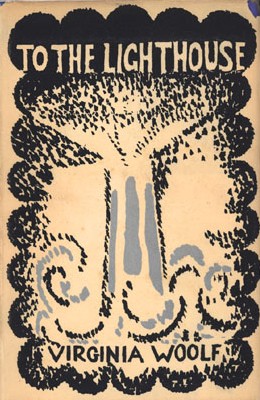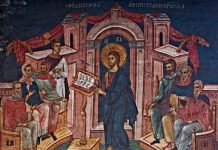
Human relationships are sorely limited. We all long for companionship and lasting union with another. However, regardless of place or time, one’s ability to achieve union with another has been and will continue to be limited.
In my reading, I have yet to find an author who so thoroughly and honestly addressed this reality as Virginia Woolf.
In her 1927 novel, To the Lighthouse, Woolf boldly, yet compassionately, explores the solitude of the human person. She tells the story of a family, the Ramsays, spending two days at their summer home with a few guests. The two days are separated by a span of ten years. Woolf depicts the characters as deeply experiencing a sense of solitude even when they are with others. Using a stream of consciousness narrative, she shows that though we are capable as humans of sharing with others, this sharing is limited and each of us ultimately faces reality alone. An analysis of how Woolf delves into this reality in her book can help readers to better assimilate the truth of what she captures. A proper understanding of how solitude is dealt with in To the Lighthouse can perhaps also set one on the path of arriving at that longed for union with another.
Lily Briscoe
Lily Briscoe is a young woman staying with the Ramsay family at their summer home. She is one of several guests spending the summer with the family. She spends much of her time trying to finish a painting of the Ramsays’ house. Early in the book,[1] when Lily is working on her painting, Mr. Bankes (another guest) approaches her. Nobody has seen the piece yet, and it is something intensely personal for Lily. She does not want Mr. Bankes to see, but feels it is somehow necessary. As the man approaches, Woolf writes that Lily “braced herself to stand the awful trial of someone looking at her picture.” However, Mr. Bankes is respectful, examines the work, and asks questions. When he finishes, Mr. Bankes offers Lily his arm, and the two walk into the garden together. As they do, Woolf describes Lily’s thoughts:
But it had been seen; it had been taken from her. This man had shared with her something profoundly intimate. And, thanking Mr. Ramsay for it and Mrs Ramsay for it and the hour and the place, crediting the world with a power which she had not suspected—that one could walk away down that long gallery not alone any more but arm in arm with somebody—the strangest feeling in the world, and the most exhilarating.
Lily makes herself vulnerable to the critique and comments of Mr. Bankes and shares something drawn from the depths of her heart. Upon doing so, however, she experiences the deep joy of union with another. Indeed, the moment is a discovery for her: a discovery that one can be “arm in arm with somebody.”
Along with her experiences of companionship, however, Lily also feels the pain of separation. After she and Mr. Bankes walk a bit, Lily sees Mrs. Ramsay and goes over to her. While Lily is deeply attracted to her, she feels that Mrs. Ramsay is somewhat remote. Unlike the closeness she felt moments before with Mr. Bankes, Lily feels quite differently as she approaches Mrs. Ramsay:
What art was there, known to love or cunning, by which one pressed through into those secret chambers? What device for becoming, like waters poured into one jar, inextricably the same, one with the object one adored? Could the body achieve, or the mind, subtly mingling in the intricate passages of the brain? or the heart?[2]
Lily longs to be close to Mrs. Ramsay, but feels inexplicably separated from her. She leans her head on the woman’s knee, but only feels the separation more deeply:
Nothing happened. Nothing! Nothing! as she leant her head against Mrs. Ramsay’s knee. And yet, she knew knowledge and wisdom were stored up in Mrs. Ramsay’s heart. How, then, she had asked herself, did one know one thing or another thing about people, sealed as they were?[3]
The balance struck by Woolf with these two scenes is ingenious. At one moment, Lily is comforted by a sense of companionship with Mr. Bankes. In the next, she is aching at the distance between her and Mrs. Ramsay. Lily’s mind ranges the possibilities of achieving union: “Could the body achieve, or the mind, subtly mingling in the intricate passages of the brain? or the heart?” However, her questioning remains unanswered. Both Lily and readers remain asking throughout the book: how can two human beings become “like waters poured into one jar, inextricably the same…?”
Struggling for some sort of answer, Lily comes up with an image:
Only like a bee, drawn by some sweetness or sharpness in the air intangible to touch or taste, one haunted the dome-shaped hive, ranged the wastes of the air over the countries of the world alone, and then haunted the hives with their murmurs and their stirrings; the hives, which were people.[4]
Although she felt close to Mr. Bankes before and felt that she was no longer alone, Lily quickly finds she is longing for a deeper intimacy. She longs to truly know another person, to share deeply with them. However, she concludes that the best one can do is to “haunt” other people, as bees haunt hives.
Mr. and Mrs. Ramsay
Woolf further accentuates the difficulty of union through the relationship of Mr. and Mrs. Ramsay. One evening, Mrs. Ramsay is sitting alone on the couch knitting. Mr. Ramsay passes her:
She knitted with firm composure, slightly pursing her lips and, without being aware of it, so stiffened and composed the lines of her face in a habit of sternness that when her husband passed, though he was chuckling at the thought that Hume, the philosopher, grown enormously fat, had stuck in a bog, he could not help noting, as he passed, the sternness at the heart of her beauty. It saddened him, and her remoteness pained him, and he felt, as he passed, that he could not protect her, and, when he reached the hedge, he was sad. He could do nothing to help her. He must stand by and watch her.[5]
As this passage plainly demonstrates, Mr. Ramsay is all too well-entertained by his thoughts. However, as he passes his wife here, he feels sad. He sees that she is lonely, but that he can “do nothing to help her.” Though he wishes he could speak to her, he “must stand by and watch her.” He feels this pain more when, shortly later, he glances back at her:
She was aloof from him now in her beauty, in her sadness. He would let her be, and he passed her without a word, though it hurt him that she should look so distant, and he could not reach her.[6]
There is an unseen barrier between Mr. and Mrs. Ramsay. The fact that the barrier exists between a man and his wife only highlights the separation all the more.
Once again, however, Woolf strikes a balance.
The two are sitting together again several chapters later. Both are reading their books, and Mr. Ramsay begins to laugh:
Their eyes met for a second; but they did not want to speak to each other. They had nothing to say, but something seemed, nevertheless, to go from him to her.[7]
Again, both Mr. and Mrs. Ramsay seem aloof from each other. However, Woolf indicates that there is nevertheless some sharing: “something seemed, nevertheless, to go from him to her.” This indicates that the couple does indeed share something. There is an intimacy.
Nevertheless, the sense of isolation is still very real. When they put down their books, Mrs. Ramsay wishes her husband would say something. She thinks to herself:
Say anything, she begged, looking at him, as if for help. He was silent, swinging the compass on his watch-chain to and fro, and thinking of Scott’s novels and Balzac’s novels.[8]
Mr. Ramsay does not speak, and the two go on in silence. At this point, Woolf inserts a curious detail. Mrs. Ramsay begins to idly mutter a line of poetry to herself: “Yet seem’d it winter still, and, you away/ As with your shadow I with these did play.” The lines, which form the conclusion of Shakespeare’s Sonnet 98, further reveal the reality of isolation in the book. Shakespeare describes the experience of one lamenting the loss of his love in the spring that has already passed by. In this sonnet, however, the one desired is apparently physically distant. Mrs. Ramsay, on the other hand, is seated beside her husband. In spite of this, she feels that she is merely interacting with his shadow. This image seems to indeed capture the experience of many of the characters in the book. One character may be with another, yet each still finds himself or herself essentially alone.
Ten Years Later
In the second part of the book, Woolf takes the idea of solitude even further. Mr. Ramsay and some of his children have returned to the summer house. Ten years have elapsed. Mrs. Ramsay is dead. Mr. Ramsay, though still characteristically wrapped up in himself, feels the need for sympathy.
…this was one of those moments when an enormous need urged him, without being conscious what it was, to approach any woman, to force them, he did not care how, his need was so great, to give him what he wanted: sympathy.[9]
The poor old widower is lonely and evidently experiencing his loneliness deeply. However, even when Lily Briscoe kindly listens to him and engages him in conversation, he is unable to escape his solitude. Indeed, Lily feels a similar solitude while she is with him:
They stood there, isolated from the rest of the world. His immense self pity, his demand for sympathy poured and spread itself in pools at their feet, and all she did, miserable sinner that she was, was to draw her skirts a little closer round her ankles, lest she should get wet. In complete silence she stood there, grasping her paint brush.[10]
As the book draws to a close, Woolf stresses Mr. Ramsay’s isolation even more. He and his children set out for the lighthouse, not far off the shore from their home. During the trip, Mr. Ramsay repeats variations of a line of poetry to himself: “We perished, each alone.” This is one of the final lines of William Cowper’s poem, The Castaway. The poem tells the story of a man who falls off a ship amid a violent storm. The crew is unable or unwilling to save him, and he drowns.[11] The reference is both a tragic and mysterious one. In relation to the theme of isolation so prevalent in To the Lighthouse this allusion is key. The now elderly Mr. Ramsay is realizing the ultimate inescapability of solitude. It is no accident that Woolf begins to draw the book to a conclusion with the old man musing over these words. Once again, Woolf is bringing her readers back to what seems to be the key theme of the book. When we dwell upon the reality of solitude, we come to realize that, no matter how close we can be to another, we still face life in a profoundly singular way. By putting the words of The Castaway into Mr. Ramsay’s mouth, it seems that Woolf found this truth about life to be best understood in death: “we perish, each alone.”[12]
Each Alone
It is interesting to note that C.S. Lewis had a similar idea in his book, A Grief Observed. Writing about the experience of losing his wife, he says:
There’s a limit to the ‘one flesh.’ You can’t really share someone else’s weakness, or fear or pain… It can’t be transferred…
We both knew this. I had my miseries, not hers; she had hers, not mine. The end of hers would be the coming-of-age of mine. We were setting out on different roads. This cold truth, this terrible traffic- regulation (‘You, Madam, to the right—you, Sir, to the left’) is just the beginning of the separation which is death itself.
She once said to me, ‘Even if we both died at exactly the same moment, as we lie here side by side, it would be just as much a separation as the one you’re so afraid of.’[13]The idea Lewis captures here and the one Woolf builds up throughout her novel are essentially the same: every person experiences life individually. However, while Lewis continues his exploration beyond this reality, Woolf apparently ends there.
Leading readers to understand and acknowledge their essential solitude is in itself a valuable and good thing. Therefore, if that is all Woolf achieves, To the Lighthouse has value, just as the above passage from Lewis has value. Such an acknowledgment prevents one from expecting from human relationships what is ultimately unachievable in this life. As Lewis says, there is indeed “a limit to the ‘one flesh.’” Any hope for perfect union with another in this life will always end in frustration.
However, I believe To the Lighthouse has value beyond leading readers to better understand the human position of solitude.
As seen with Lily or Mr. and Mrs. Ramsay, there are both moments of accentuated separation, and moments of intimacy. While Lily felt alienated from Mrs. Ramsay, she experienced the joy of walking hand in hand with Mr. Bankes. While Mr. and Mrs. Ramsay each longed at times to be acknowledged by the other, there was also a mysterious and unspoken communication shared in a glance. Perhaps Woolf’s balance is where the key to the novel lies. Her optimism and balance in presenting human relationships show to readers that a degree of union with another is possible. Woolf, like many other authors of the twentieth-century could have very easily slipped into disillusionment with the acute sense of isolation that seemed to so markedly characterize the age. However, she did not. Rather, her honesty and optimism in presenting the realm of human interaction leaves readers with a sense of hope.
While as Catholics, we know that the perfect union with another, for which we all long, will come only in Heaven, Woolf’s nuanced approach to the at times gratifying, at times agonizing world of human relations certainly does not discourage. Rather, it can help set readers of any belief out in search of that perfect union for which man was created, and after which he ever strives: the eternal union with his Creator.
[1] Virginia Woolf, To the Lighthouse, Part I: The Window, Chapter 9.
[2] Ibid.
[3] Ibid.
[4] Ibid.
[5] Virginia Woolf, To the Lighthouse, Part I: The Window, Chapter 11.
[6] Ibid.
[7] Virginia Woolf, To the Lighthouse, Part I: The Window, Chapter 18.
[8] Ibid.
[9] Virginia Woolf, To the Lighthouse, Part III: The Lighthouse, Chapter 3.
[10] Ibid.
[11] William Cowper, The Castaway, https://www.poetryfoundation.org/poems/44027/the-castaway
[12] Virginia Woolf, To the Lighthouse, Part III: The Lighthouse, Chapter 7.
[13] C.S. Lewis, A Grief Observed, Chapter I.










